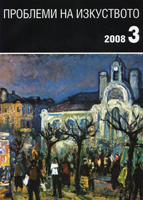Сердика
Serdica
Author(s): Julia ValevaSubject(s): Cultural history
Published by: Институт за изследване на изкуствата, Българска академия на науките
Summary/Abstract: The ancient history of Sofia (Serdica) does not differ from the history of many other cities that fell within the boundaries of the Roman Empire. During the 2nd century the city was built following the Roman model. A fortress wall was constructed, as well as an orthogonal grid of streets, a forum, public administration buildings, temples, baths and residential neighborhoods. Just like the city plan itself, the architecture, too, was completely of the Roman type. Preserved fragments of architectural sculpture show that the buildings were constructed in the Roman Ionian and Corinthian order. Recovered inscriptions and the precise workmanship on decorative sculptures indicate that master stonecutters from the eastern provinces worked in Serdica. Unfortunately, Serdica’s ancient ruins have been heavily destroyed. Only two churches are well preserved – St. Sofia and (the Rotunda of) St. George, thanks to the fact that they remained religious centers throughout the centuries. Today in Sofia you can still see part of the city wall and the eastern gate, an complex octagonal the east of the Rotunda of St. George, several tombs from the eastern necropolis (under the St. Sofia Church) and part of a recently discovered late antique amphitheater, also located east of the enclosed city space. The archaeological data suggests that Serdica had two periods of strong development: the first during the 2nd and the beginning of the 3rd centuries, and the second in late antiquity. From the first developmental period, examples of exquisite and decorative sculpture have been preserved, while monuments from the second period include the churches of St. Sofia and St. George, the tombs with their wall paintings and several Christian religious objects. Despite many years of archaeological research on ancient Serdica, several basic questions have still not been clarified. One concerns the layout of the forum and the interpretation of the massive building in its southern part. The other problem is the interpretation of the entire south eastern part of the inner city; the most recent hypothesis suggested that it was Emperor Constantine’s palace. This attractive idea still requires more evidence, however. Furthermore, we must not overlook the long presence of Emperor Galerius in Serdica between 303 and 309 and the accompanying suggestion that his residence was later used by Constantine as well. During late antiquity, Serdica was capital of the Dacia Mediterranea province, thus it contained a residence for the prefect of the province us well.
Journal: Проблеми на изкуството
- Issue Year: 2008
- Issue No: 3
- Page Range: 3-9
- Page Count: 7
- Content File-PDF

